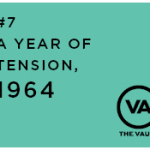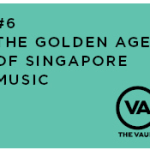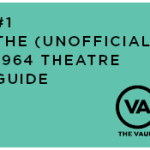Singapore. Neon lights at night, 1960s.
There were the three “Worlds” which lit up Singapore’s nightlife in the ’50s and ’60s:
New World Park. View
“New World was famous for its cabarets, Chinese and Malay opera halls, shops, restaurants, open-air cinemas, boxing arenas, and shooting galleries. … New World’s cabarets were so raved about that it was said to have occasionally wooed the late Sultan Ibrahim of Johor and his large entourage. Men would pay a dollar to dance three foxtrots or waltzes with cheogsam-clad taxi-dancers.
Malay men were drawn to New World by Bunga Tanjong which hosted bands playing Malay tunes to the beat of ronggeng or asli interspersed with cha-cha or rumba. On some nights, they would also threw in the twist and the rock ‘n roll. Men could buy a 50 cent ticket for a dance with the ladies. The early birds would secure the best dancers or their favourite ones and also got seats nearest to the dancing girls. On some nights Bunga Tanjong could pack up to 500 people. The popularity of Bunga Tanjong inspired acclaimed playwright A.Samad Said to write a well-received play on the life of a cabaret girl, entitled Lantai T. Pinkie (T. Pinkie’s floor).”
Gay World. View
“Patrons at Happy World were kept enthralled by an east-meets-west mix of entertainment; cabaret, ronggeng, bangsawan, wayangs, movies, gaming, sport matches, stunts, circus and shopping. The fees to these recreations were affordable, even to youths.”
Great World Amusement Park. View
“Other mainstays of the park were cabaret, housed by the Flamingo Nite-Club, and theatres namely Canton, Atlantic, Sky and Globe, which screened both Chinese and English films.”
With the opening of Tropicana Theatre Restaurant and Niteclub in 1968, Singapore’s nightlife received an additional boost:
Singapore’s nightlife comes of age (The Straits Times, 20 March 1968). View
“The opening of the unique multi-million dollar Tropicana Entertainment Building this afternoon by the Chairman of the Singapore Tourist Promotion Board, Mr. P. H. Meadows, heralds the beginning of a new era in the night life and entertainment field in Singapore.”
Tropicana View
“Besides revues and pop singers, Tropicana also featured keroncong (a musical form from Indonesia) ensembles, fashion shows, Sunday tea dances, acrobats, magicians, dagger and fire jugglers, beauty pageants and comedy acts. The house bands which performed at Tropicana included a 12-piece Tropicana orchestra conducted by Aris Salvador, Romy Katindig and the Hi-Chords, Jose Daroya and the Gay Blades and Vittorio’s Blue Six.”
“Tropicana had been fully booked each night for its first three years, but the novelty of its shows began to wear off as competing nightclubs like the Neptune and Golden Million started their own topless revues.”
Iconic to the local entertainment and nightlife scene were the Cabaret Girls:
Singapore Cabaret Girls Association. Annual general meeting election announcement. (The Straits Times, 26 November 1948). View
‘Cabaret girl’ is ‘too degrading’ (The Straits Times, 11 June 1950). View
“Singapore’s cabaret girls think that name too degrading – so they have changed it with official approval. Henceforth, the “Singapore Cabaret Girls’ Association” will be known as the “Singapore Dance Hostesses’ Association”.
[Miss Nancy Ho, president] explained that the association considered the name “cabaret girls” “impolite“ and “discourteous”.”
Dance hostesses celebrate an anniversary (The Singapore Free Press, 29 October 1955) View
“There was plenty of fun and laughter last Tuesday night when Singapore dance hostesses took a night off to celebrate the 17th anniversary of their association.
Concert items included songs in Mandarin, Cantonese and Hokien [sic], a demonstration of the art of Chinese art of self-defence, a fan dance and two Mandarin plays, entitled, “Debts” and “The Oppressed”. Messrs. Pai Yen and Kwan Sin Yi directed the plays.”
[Pictures by Johnny Quek accompany the article]
Cabaret girls now work in bars as well for extra money (The Singapore Free Press, 15 July 1960). View
“A number of cabaret girls are now working as waitresses in bars to supplement their fallen income.”
“Our life is expensive. We should look chic and pretty and it costs money”, she [Maria] said.”
By Daniel Teo
Published on 18 September 2014
The Vault 1.1 – Nineteen Sixty-Four revisits When Smiles Are Done and A White Rose at Midnight, refreshes and retells the stories in them through the eyes of four artist-collaborators on 22 September 2014, 8pm at Centre 42 Black Box. Admission is free.
Find out more here.






